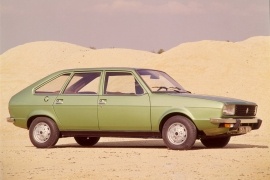RENAULT 20 Models/Series Timeline, Specifications & Photos
First production year: 1975
Engines: Gasoline, Diesel
Body style: Hatchback
The Renault 20 was the first post-war car built by the Renault for people who asked for more interior room, but at an affordable price.
In the spring of 1975, the French brand launched the Renault 30 and, later that year, it introduced the cheaper version 20. The vehicle's shape was similar. The large executive saloon featured a twin round headlights for the 30 and rectangular ones for the 20. The 4.5-meter long vehicle was considered a large one, for its era. The 5-door idea was a big success for Renault 16 and the designers kept the solution for the 20. Due to this, the trunk was big and the folding rear seats could transform the vehicle into a sort of station wagon.
The interior was fitted with nice materials, soft plastic, metal, man-made leather for the door panels and comfortable seats filled with a special sea-weed (zegras). A big improvement was the repositioning of the gear-lever, which was on the floor instead of the steering column. Compared with the Renault 30, the 20 didn't feature a power-steering, but it had power brakes.
Under the hood, there was a 1.6-liter engine mated as standard with a four-speed manual gearbox. A 3-speed automatic was available as an option. Fuel economy was average for the manual transmission and bad for the automatic. In 1982, the Renault 20 was fitted with a 2.0-liter engine and a 5-speed manual gearbox. A 2.1-liter diesel engine was offered on the Renault 20 in 1979.
